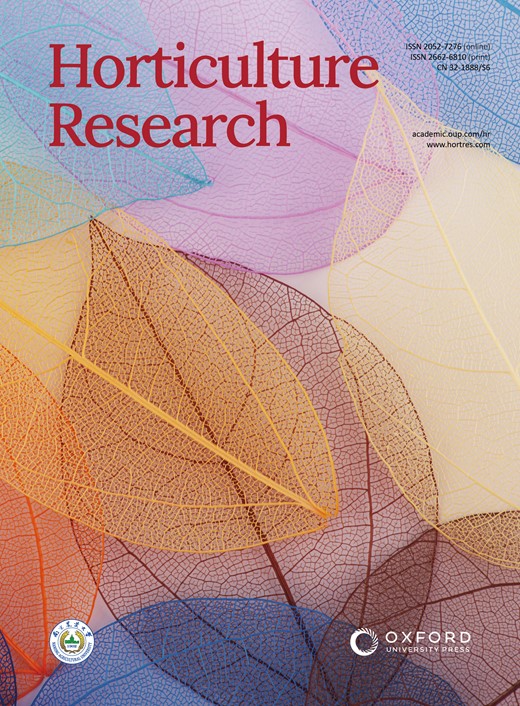Chromatin accessibility profile and the role of PeAtf1 transcription factor in the postharvest pathogen Penicillium expansum
IF 8.7
1区 农林科学
Q1 Agricultural and Biological Sciences
引用次数: 0
Abstract
Gene transcription is governed by a complex regulatory system involving changes in chromatin structure, action of transcription factors, and activation of cis-regulatory elements. Postharvest fruits are threatened by Penicillium expansum, a leading causal agent of blue mold disease and one of the most economically significant postharvest pathogens worldwide. However, the information on its transcription regulatory mechanism is lagging. Here, we conducted an assay for transposase accessible chromatin sequencing (ATAC-seq) for P. expansum during vegetative growth and infection phase and then studied the function of a bZIP transcription factor PeAtf1. Results highlighted the role of promoter regions in gene transcription and the significant difference in P. expansum between the two phases. Six footprint-supported cis-regulatory elements of active transcription factors were obtained and analyzed. We then identified a homolog of the bZIP regulator Atf1, PeAtf1, and found it positively regulated vegetative growth, reproduction and osmotic stress response in P. expansum. Conversely, PeAtf1 deletion enhanced fungal tolerance to oxidative, cell wall and membrane stresses, which might contribute to the virulence of P. expansum in apple fruits, leading to similar pathogenicity between mutants and the wild type. Overall, this study provides new insights into the transcription regulatory mechanism of P. expansum, aiding in the future development of strategies to control P. expansum.收获后病原体扩张青霉的染色质可及性概况和 PeAtf1 转录因子的作用
基因转录受复杂的调节系统控制,其中涉及染色质结构的变化、转录因子的作用以及顺式调节元件的激活。采后水果受到扩张青霉菌的威胁,扩张青霉菌是蓝霉病的主要病原菌,也是世界上最具经济意义的采后病原体之一。然而,有关其转录调控机制的信息却很滞后。在此,我们对无性生长期和感染期的扩张孢霉进行了转座酶染色质测序(ATAC-seq),然后研究了 bZIP 转录因子 PeAtf1 的功能。结果凸显了启动子区域在基因转录中的作用,以及扩张体在两个阶段之间的显著差异。我们获得并分析了六个活性转录因子的足彩代理顺式调节元件。然后,我们发现了一个 bZIP 调节因子 Atf1 的同源物 PeAtf1,并发现它对扩张叶绿体的无性生殖、繁殖和渗透胁迫反应有正向调节作用。相反,PeAtf1 的缺失增强了真菌对氧化、细胞壁和膜胁迫的耐受性,这可能有助于扩张孢霉在苹果果实中的毒力,导致突变体和野生型之间具有相似的致病性。总之,本研究为了解扩张孢霉的转录调控机制提供了新的视角,有助于今后制定扩张孢霉的控制策略。
本文章由计算机程序翻译,如有差异,请以英文原文为准。
求助全文
约1分钟内获得全文
求助全文
来源期刊

Horticulture Research
Biochemistry, Genetics and Molecular Biology-Biochemistry
CiteScore
11.20
自引率
6.90%
发文量
367
审稿时长
20 weeks
期刊介绍:
Horticulture Research, an open access journal affiliated with Nanjing Agricultural University, has achieved the prestigious ranking of number one in the Horticulture category of the Journal Citation Reports ™ from Clarivate, 2022. As a leading publication in the field, the journal is dedicated to disseminating original research articles, comprehensive reviews, insightful perspectives, thought-provoking comments, and valuable correspondence articles and letters to the editor. Its scope encompasses all vital aspects of horticultural plants and disciplines, such as biotechnology, breeding, cellular and molecular biology, evolution, genetics, inter-species interactions, physiology, and the origination and domestication of crops.
 求助内容:
求助内容: 应助结果提醒方式:
应助结果提醒方式:


